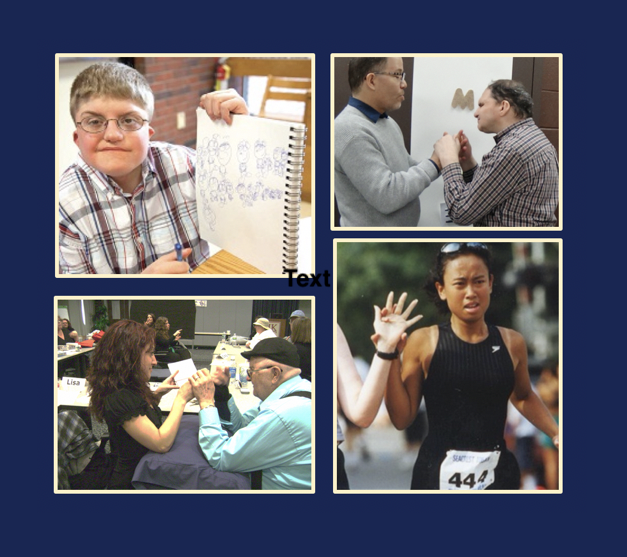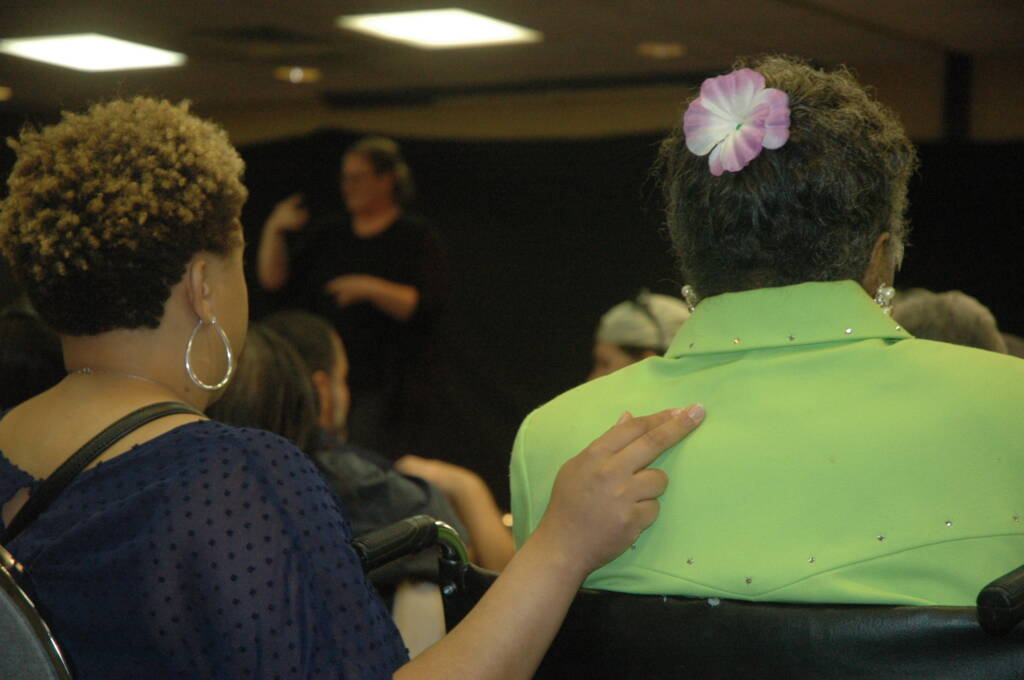Purpose of the Training
This online course provides an introductory level of training in Haptics focusing on the fundamentals of Haptics including definitions, history, practical implementation and specific signal formation and use. Haptics is a standardized system for providing and receiving visual and environmental information as well as personal reactions/social feedback via touch signals on the body.
Course Structure
The course is structured so learners can follow at a pace that is comfortable for them. Participants are encouraged to take the course with a partner or in a small group. This structure provides learners with the opportunity to practice the techniques on others and complete all of the suggested activities. While this is encouraged, it is not mandatory. Those who study the course alone will learn the foundations of Haptics and be able to practice techniques when they are out in the community. This Haptics course is suitable for both beginners or as a “refresher” course for those who have already completed a hands-on workshop or training through HKNC.
While it is not mandatory for completing the course, participants are encouraged to purchase the book, Haptic Communication, The American Edition of the Original Title Haptisk Kommunikasjon. This book version will serve as a reference and resource to learners as they practice their skills using Haptics in the community.
Course Objectives
At the completion of this course, individuals will be able to:
- Demonstrate an understanding of the term “Haptics” and identify at least 2 important functions of Haptics.
- Explain the background and history of Haptics.
- Identify the components of Haptics including reference signals, common Haptic signals, structure (places of articulation, hand shapes, movement, pressure), and mapping.
- Explain how to prioritize visual and environmental information when using Haptics.
- List the roles and responsibilities of both the person providing and the person receiving Haptics.
- Modify use of Haptics to meet individual needs.
- Provide and/or receive information regarding size, amount or intensity and direction using Haptic signals.
- Provide and/or receive context and distinguish between similar signals using reference signals.
- Provide and/or receive a description of various actions, rooms and people using Haptic signals.
- Explain what is needed to be a successful communication team as a provider and/or receiver of Haptics.
Additional Courses

Employment
Working with Individuals who are DeafBlind: A Course for Vocational Counselors and Other Professionals
CRC CE Hours: 2.0
ACVREP CE Hours: 2.0

Introduction to DeafBlind
Overview of Etiologies and Visual Conditions Commonly Associated with Deaf-Blindness
ACVREP CE Hours: 1

